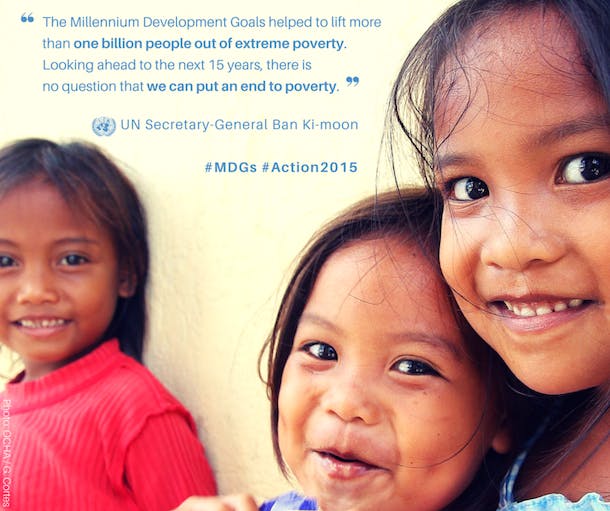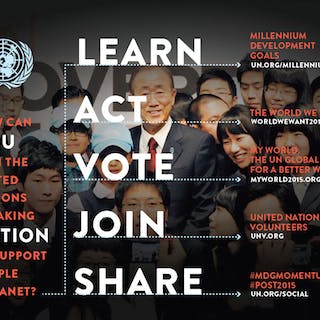
The United Nations released its annual report on the Millennium Development Goals (MDGs) today, and it delivers a powerful message: When the international community takes action around a shared agenda, progress happens.
Launched by world leaders and the UN in 2000, the MDGs provided eight concrete, measurable goals to alleviate poverty and improve lives around the world by the end of 2015. Governments, businesses, civil society groups, and individuals mobilized at local, regional, national, and global levels to make significant gains.
With the headlines dominated by serious global challenges, it’s easy to think that our problems are unsolvable. But the MDGs provide an important reminder that change is possible when we act. Here are 10 highlights from the report:
- FACT: From 1990-2015, more than 1 billion people moved out of extreme poverty and the share of people in the developing world living in extreme poverty dropped from 47% to a projected 14%.
- FACT: The number of out-of-school children of primary school age has almost been cut in half since 2000, from 100 million children in 2000 to an estimated 57 million children today.
- FACT: Since 1990, child deaths have been reduced by more than half. In 1990, 12.7 million children under age 5 died, and this year that number is estimated to drop to less than 6 million.
- FACT: Maternal deaths have declined by 45% since 1990.
- FACT: Between 2000-2013, new HIV infections decreased by approximately 40%.
- FACT: From 2000-2015, more than 6.2 million malaria deaths were prevented, mostly of children under age 5.
- FACT: An estimated 37 million lives were saved through tuberculosis prevention, treatment, and diagnosis solutions from 2000-2013.
- FACT: Since 1990, 2.6 billion people have gained access to an improved source of drinking water.
- FACT: The projected share of undernourished people in developing regions is expected to drop by almost half, from 23.3% in 1990-1992 to 12.9% in 2014-2016.
- FACT: About two-thirds of countries in developing regions have closed the gender gap in primary education.
While we have made significant progress under the MDGs, the report also highlights where we need to do much better. Inequalities persist, with the poorest among us often left behind from the gains that we’ve made. In areas including sanitation, gender equality, maternal and children’s health, and access to family planning, we have a lot more work ahead of us.
In September, world leaders will gather at the UN to launch the next set of global goals that will follow the MDGs. This is an opportunity to build on the progress we’ve made, apply what we’ve learned from the MDGs, and dig deeper to address the root causes of poverty and its connected social, economic, and environmental elements.
As UN Secretary-General Ban Ki-moon writes in the opening of the report, “Reflecting on the MDGs and looking ahead to the next 15 years, there is no question that we can deliver on our shared responsibility to put an end to poverty, leave no one behind, and create a world of dignity for all.”
TAKE ACTION: The UN Foundation is a partner of Global Citizen, a movement to help fight extreme poverty and inequality around the world. To take action on the world’s biggest challenges and help achieve our global goals, visit GlobalCitizen.org.

